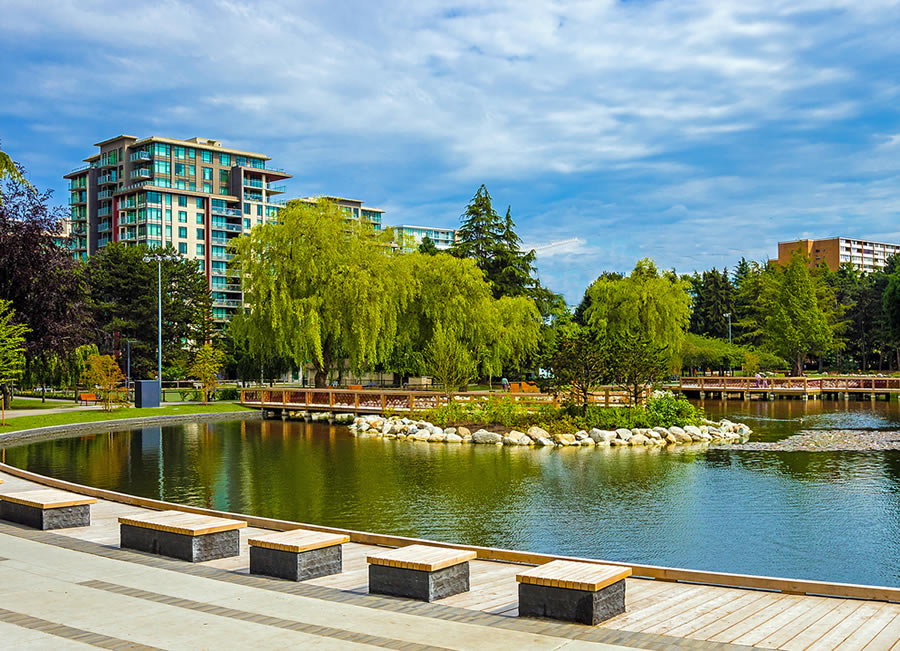
Lakes and ponds are delicate ecosystems that require attentive and adaptive management to thrive. However, even the most well-structured management programs can become outdated or ineffective over time, leading to a decline in the water body's health. In this brief article brought to you by Aquatic Restoration, we share some signs that indicate the need for a reevaluating your management approach. We hope these tips help you maintain the vitality of the ecosystem.
If you are looking for uniformed professionals to handle the lake or pond maintenance, then consider the time-tested specialists at Aquatic Restoration. Give us a call today to consult with a member of our team.
One of the most telling signs that a management program needs reevaluation is a noticeable decline in water quality. This can manifest in various ways, such as increased turbidity, foul odors, algal blooms, or changes in the aquatic vegetation.
Elevated levels of nutrients like phosphorus and nitrogen, often stemming from runoff or other external sources, can trigger excessive algae growth, leading to oxygen depletion and compromised water quality.
Additionally, the presence of pollutants, heavy metals, or other contaminants might become apparent, impacting both the health of the water body and its surrounding ecosystem. Regular water quality assessments and monitoring can help identify these changes and signal the need for program reassessment.

A healthy lake or pond fosters a diverse range of flora and fauna. A decline in biodiversity is a clear indicator that the current management approach might be insufficient. This decline might be observed through diminished fish populations, disappearance of certain plant species, or a shift in the balance of the ecosystem.
Changes in the ecological balance can be indicative of underlying problems, such as changes in water chemistry, habitat degradation, or invasive species encroachment. Recognizing these shifts in biodiversity warrants a closer examination of the current management strategies to address the root causes.
Erosion and sedimentation not only affect the appearance of a water body but also play a significant role in its overall health. If the pond or lake management program fails to mitigate erosion or sedimentation, you could witness the loss of valuable habitat, excessive nutrient input, and compromised water clarity.
Factors such as altered land use, inadequate shoreline protection, or ineffective erosion control measures may contribute to sedimentation and soil erosion. Monitoring these factors is crucial in assessing whether the current program is sufficiently addressing these concerns.
A successful management program should involve the local community and stakeholders and foster a sense of ownership and responsibility. If there’s a lack of community engagement or the program doesn’t adapt to changing circumstances or needs, then it might be time for reevaluation.
Communities might change over time, and their needs or priorities regarding the lake or pond can evolve. Whether it's addressing recreational activities, water usage, or environmental concerns, a stagnant or non-responsive management program could become disconnected from the current needs of the community.
Lake, detection pond, and retention pond maintenance requires constant refreshing. Reevaluating the management approach might involve conducting thorough environmental assessments, updating management plans, implementing new technologies, enhancing community engagement, or integrating more sustainable practices.
There is a lot on the plate, and we understand you have questions. Our team is on standby to schedule a consultation, face-to-face meeting, or on-site visit for as soon as possible. Let Aquatic Restoration bring your body of water back to life!
Lake and pond dredging is an essential maintenance task that helps to improve water quality, restore depth and capacity,…
There’s a lot that goes into managing a lake. Beyond the aesthetics, it’s important to maintain ecological balance and…
Excessive algal growth is a serious threat to lakes and ponds. Left unchecked, algal blooms can deplete oxygen levels and…
Dredging is the removal of accumulated sediment and debris from the bottom of a lake or pond. This process is…
Pond and lake owners deal with a wide range of issues, including algae blooms, aquatic weed infestations, poor water clarity,…